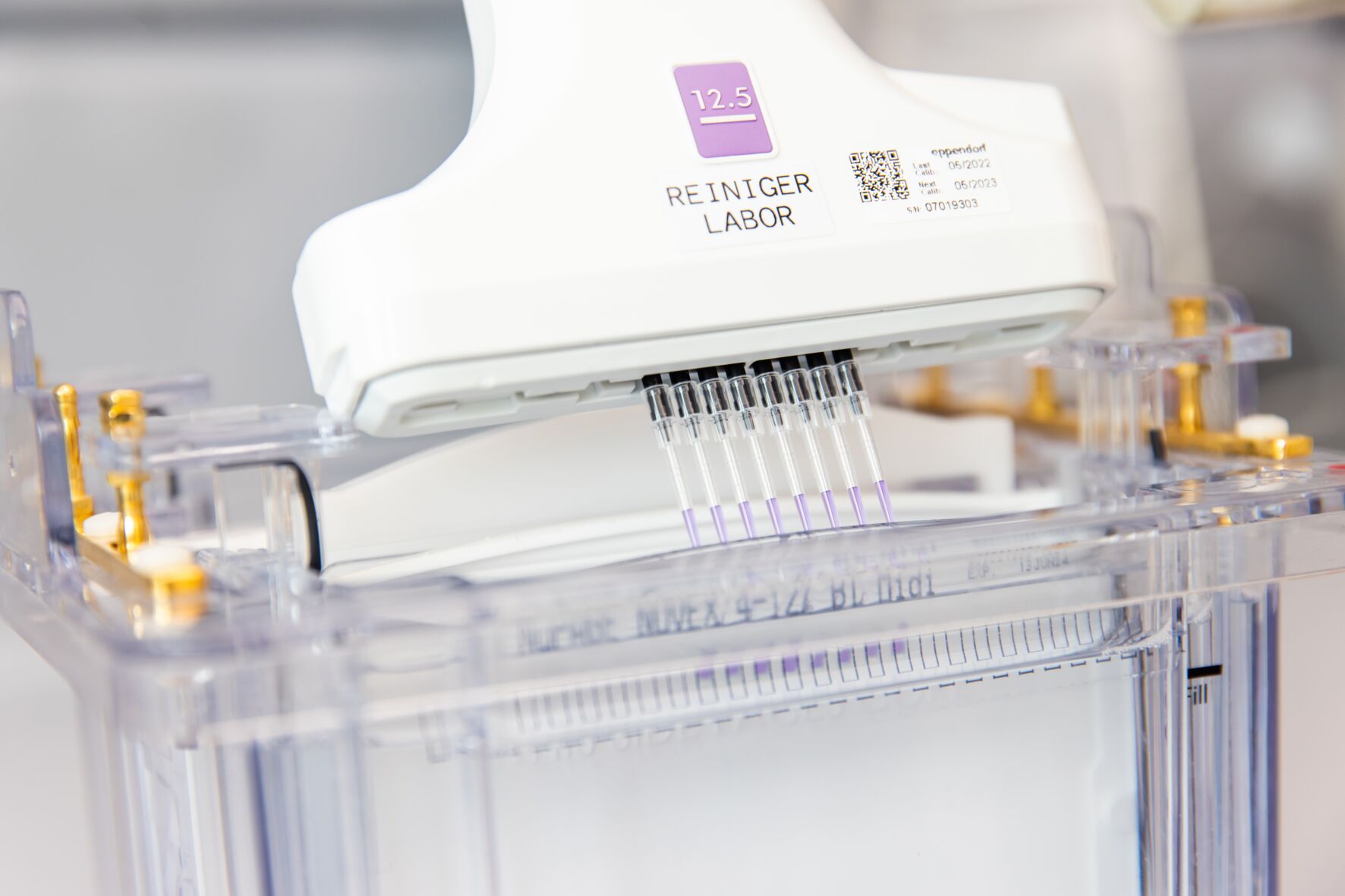
Steps 1 & 2: Construct Design and Molecular Biology

In close consultation with you, our experienced protein scientists design constructs that lead to the greatest possible success for your project. For this purpose, we rely on our own broad experience, as well as the current literature, limited proteolysis analysis, and bioinformatic tools (homology modeling, secondary structure, and domain prediction supported by AI-based prediction software like AlphaFold2). The sequences of the designed constructs (including truncations, mutants, and fusion proteins) are codon optimized for various expression hosts. Our customized molecular biology services incorporate an efficient parallel cloning approach in our versatile in-house vector panel that provides great flexibility in tag selection (FLAG, GFP, GST, His, MBP, NusA, Strep, SUMO, ZZ, etc.) and tag removal using various proteases (e.g., HRV C3 protease, TEV).
Step 3: Protein Expression

Our extensive experience with a variety of host systems, including E. coli (e.g., BL21(DE3), Arctic), mammalian cells (e.g., CHO, HEK293, Expi293F), and insect cells (e.g., Tni, Sf9), ensures the best expression of our generated vectors. At NUVISAN, we have capabilities ranging from small-scale (plate format) and mid-scale expression to large-scale expression (up to 200 L) performed by our microbiology department. Our multi-parallel optimization approach allows for identification of ideal production conditions of up-scaled expressions.

Step 4: Protein Purification

We optimize our purification processes using multi-parallel expressions in a 96-well format and different purification matrices (e.g., IMAC, Glutathione Sepharose, etc.). Our streamlined process includes target-specific buffers at the small-scale stage and optional at the mid-scale stage to allow for early estimation of protein yields and easy adaptation to a large-scale production protocol. NUVISAN is equipped with more than 10 state-of-the-art ÄktaTM instruments to efficiently run multiple purifications in parallel, consisting of different chromatography steps that range from various types of affinity and ion exchange chromatography to hydrophobic interaction and gel filtration. This combination of batch and parallel processing ensures the best in high-throughput protein purification.

Step 5: Quality Control
At every step of our production pipeline, we apply quality control measures to monitor and optimize the protein production and purification process. We subject all purified proteins to an in-depth quality control regimen based on SDS-PAGE and MS-based quality control and also offer complementary biophysical and biochemical assays.
- SDS-PAGE and MS to show purity and integrity
- DLS, SEC-MALS, and analytical SEC equipped with fluorescence detector (F-SEC) to analyze the oligomerization and aggregation states
- TSA, nanoDSF, NMR, and CD to analyze protein folding and stability and provide the most stable construct for crystallization trials
- SPR, ITC, NMR, and MST to analyze binding activity
- biochemical, NMR-based, or MS-based assays to analyze enzymatic activity
- endotoxin testing






